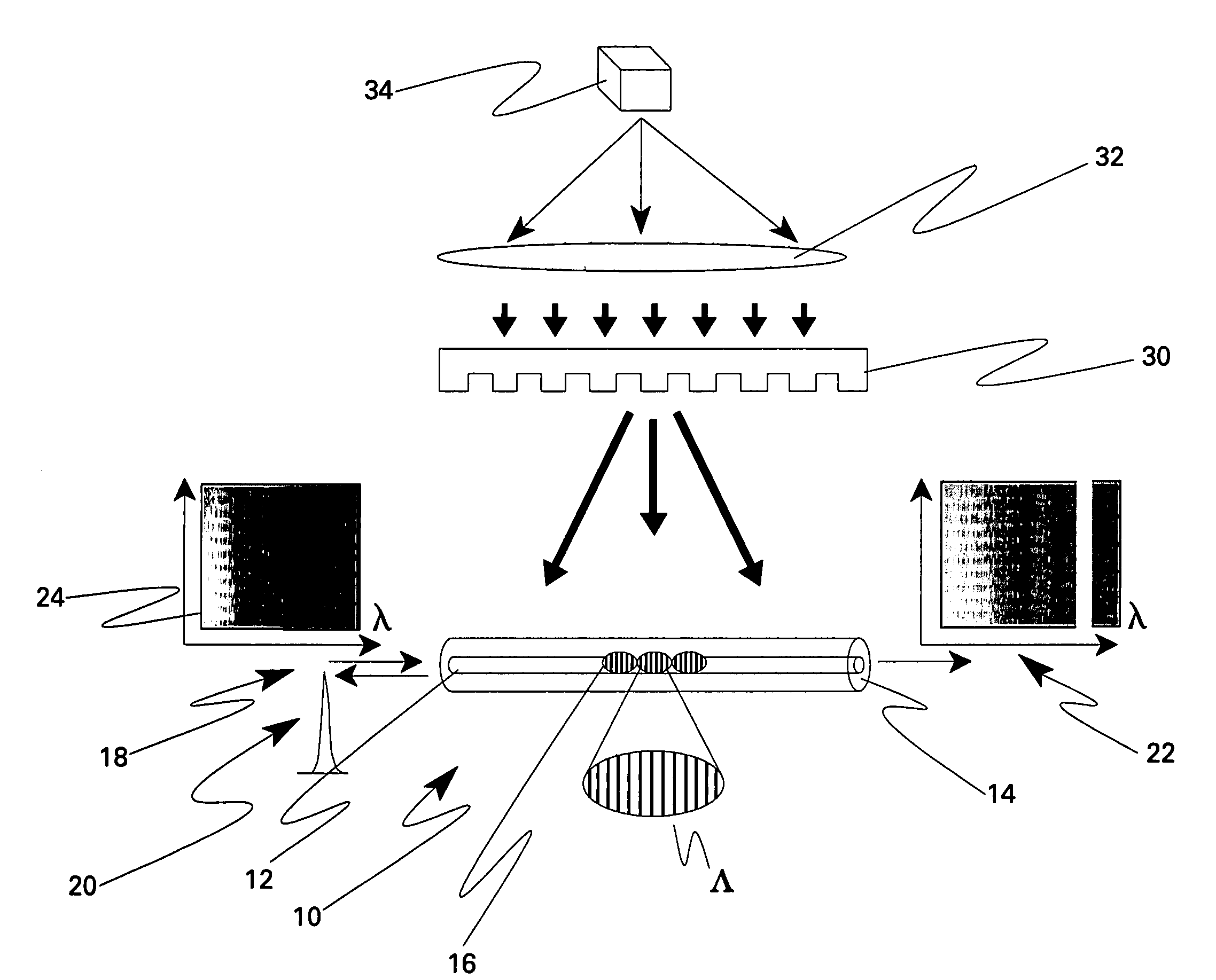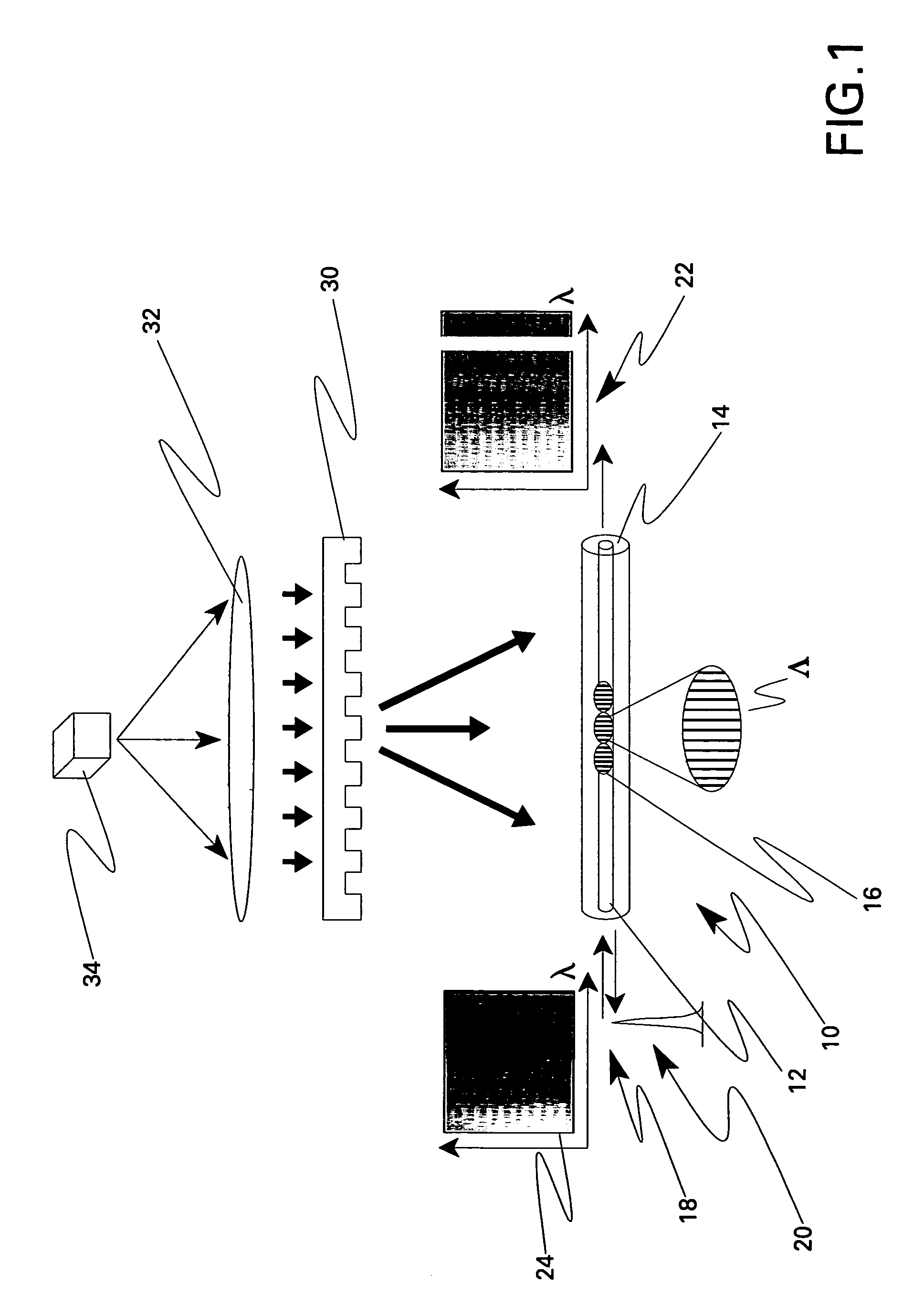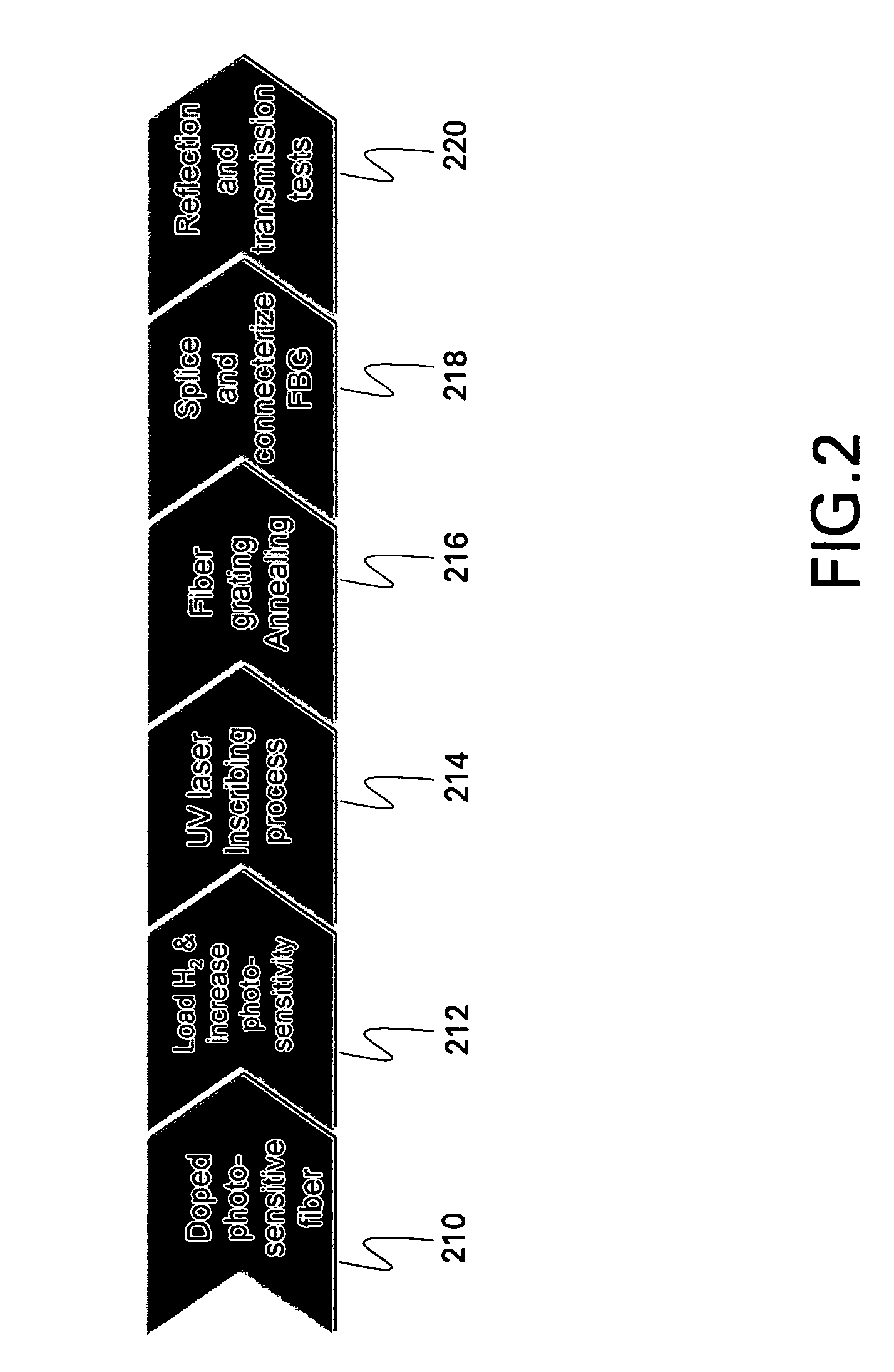Fiber optic sensing device and method of making and operating the same
a fiber optic and sensing device technology, applied in the field of chemical sensing, can solve the problems of limited operation temperature range, limited range of conventional optical and electrochemical sensing devices, and limited use of these sensors
- Summary
- Abstract
- Description
- Claims
- Application Information
AI Technical Summary
Benefits of technology
Problems solved by technology
Method used
Image
Examples
example 1
[0031]In one fabrication method example, a modulated FBG based chemical sensing device has been fabricated with a strong 244 nanometer wavelength ultraviolet (UV) light 34 inscription by a lens 32 and periodic modulated phase mask 34. Before the grating inscription, a hydrogen loading process was used to enhance the fiber core 12 photosensitivity. Fiber core 12 was a single mode core with a diameter of about nine micrometers and co-doped by about five percent to about seven percent mole GeO2 and about 10 ppm to about 100 ppm Fluorine. The combination of fiber cladding 14 and fiber core 12 was about 125 micrometers in diameter and without any doping elements. The refractive index modulation profile was apodized with a raised cosine pattern along the fiber axis.
[0032]A multiple apodization process can be used when the length of grating region 16 is larger than about 5 millimeter (mm). For example, several sequential apodization profiles are typically applied for a 36 mm length of fibe...
example 2
[0034]The sensing device described with respect to EXAMPLE 1 was illuminated by a near infrared broadband light source from a tunable laser diode, and the chemicals were detected by observing a time-dependent wavelength shift from an interrogation system in monitoring both reflectance and transmittance. The absorption processes of the target chemical modulate the fiber grating optical properties and thereby modulate the coupling properties between the cladding modes and fundamental mode. Chemical sensing based on this apodized FBG has experimentally shown perceivable Bragg resonant wavelength shift with 20–200 pm downshift and decay-like response characteristics from acetone, methanol, toluene, isopropyl alcohol, and hydrofluoric acid.
[0035]In a more specific method embodiment, the light comprises a test light and, prior to transmitting the test light, a training light is transmitted through grating region 16, a chemical (meaning at least one) is introduced into an environment of fi...
example 3
[0050]For verification, a sensing system was fabricated and included chemical sensing device 500, a polyimide recoated fiber Bragg grating as a real-time temperature sensing device 600, and a four channel interrogation system 718. A one-milliwatt tunable diode laser 714 was connected to the sensing fiber through a fiber optic coupler 712. The scanned wavelength, with a rate of 80 nanometers per second, was calibrated with a gas cell and sweep meter 716. The system resolution was 0.4 pm for chemical sensing device 500 sensing. A tracking algorithm in processor 720 for transmission-dip and reflected peak was used to record the time-dependent chemical sensing. Care was taken to maintain the gratings with a proper tensile stress during the measurements by maintaining the sensing probe 710 with a stable support structure or package 518 (FIG. 6).
[0051]As part of chemical sensing probe 710, two fiber Bragg gratings were inscripted on a germanium oxide doped photosensitive silica single-mod...
PUM
 Login to View More
Login to View More Abstract
Description
Claims
Application Information
 Login to View More
Login to View More - R&D
- Intellectual Property
- Life Sciences
- Materials
- Tech Scout
- Unparalleled Data Quality
- Higher Quality Content
- 60% Fewer Hallucinations
Browse by: Latest US Patents, China's latest patents, Technical Efficacy Thesaurus, Application Domain, Technology Topic, Popular Technical Reports.
© 2025 PatSnap. All rights reserved.Legal|Privacy policy|Modern Slavery Act Transparency Statement|Sitemap|About US| Contact US: help@patsnap.com



